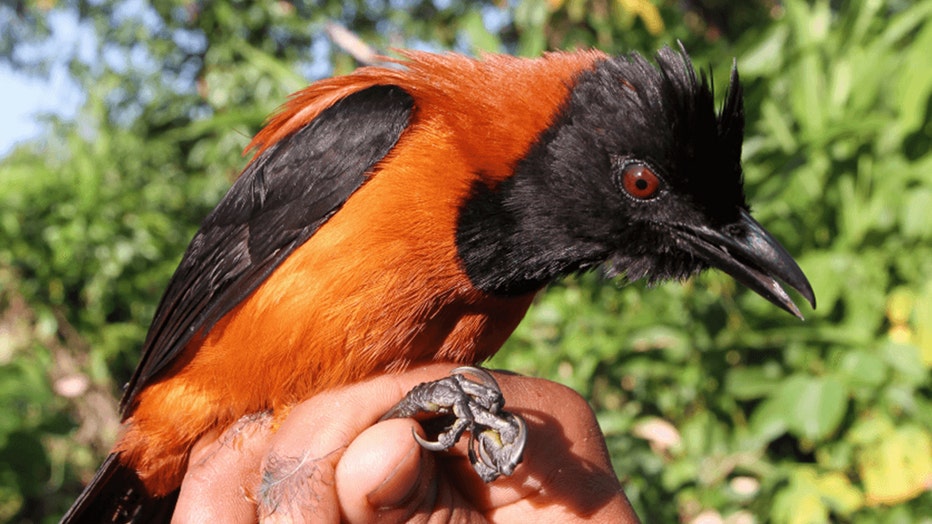New species of poisonous birds discovered in New Guinea jungle by Danish researchers

The rufous-naped bellbird (Aleadryas rufinucha) is one of discovered posinous birds
New Guinea - Researchers recently discovered two new species of poisonous birds during an expedition into the jungles of New Guinea.
According to the University of Copenhagen, Knud Jønsson and his colleague Kasun Bodawatta captured the birds, each of which has developed the ability to consume toxic food and turn that into a poison of its own.
"We managed to identify two new species of poisonous birds on our most recent trip. These birds contain a neurotoxin that they can both tolerate and store in their feathers," Jønsson shared.
The two birds that the researchers discovered to be poisonous are the regent whistler (Pachycephala schlegelii) and the rufous-naped bellbird (Aleadryas rufinucha).

Kasun Bodawatta taking samples from a bird in New Guinea. (Credit: Knud Jønsson)
"We were really surprised to find these birds to be poisonous as no new poisonous bird species has been discovered in over two decades. Particularly, because these two bird species are so common in this part of the world," Jønsson continued.
He told FOX Television Stations that he initially thought the results must be due to an error.
"After repeating the analysis, I was astonished and somewhat baffled!," he revealed.
There is a distinction in biology between the two ways that animals deploy poisons. There are poisonous animals that produce toxins in their bodies and others that absorb toxins from their surroundings. The birds, according to the researchers, belong to the latter category and are believed to acquire toxins from what they eat.
During their work, the researchers experienced the toxin’s effects.
RELATED: 13 bald eagles possibly poisoned after eating euthanized animals
"Knud thought I was sad and having a rough time on the trip when they found me with a runny nose and tears in my eyes," Bodawatta said. "Removing birds from the net isn’t bad, but when samples need to be taken in a confined environment, you can feel something in your eyes and nose. It's a bit like cutting onions - but with a nerve agent, I guess."
The researchers also noted that local residents in New Guinea avoid the toxic birds since they are difficult to hold – and eat.
"The locals aren’t fond of spicy food and steer clear of these birds, because, according to them, their meat burns in the mouth like chili," Jønsson explained.

One of the most poisonous birds known, The Hooded Pitohui also lives in New Guineas jungles. (Credit: Knud Jønsson)
The team said this research will primarily contribute to a better understanding of New Guinea’s birds and how different animal species not only acquire a resistance to toxins but use them as a defense mechanism.
In addition, other aspects of the research may have the potential to help ordinary people. They said the toxin conquered by the birds over time is closely related to other toxins, such as the one responsible for shellfish poisoning.
"Obviously, we are in no position to claim that this research has uncovered the holy grail of shellfish poisoning or similar poisonings, but as far as basic research, it is a small piece of a puzzle that can help explain how these toxins work in cells and in the body. And, how the bodies of certain animals have evolved to tolerate them," Jønsson added.
He concluded to FOX, "Nature never fails to surprise us. We really are surrounded by a natural world full of wonders and still in 2023 full of unknowns."
This story was reported from Los Angeles.

